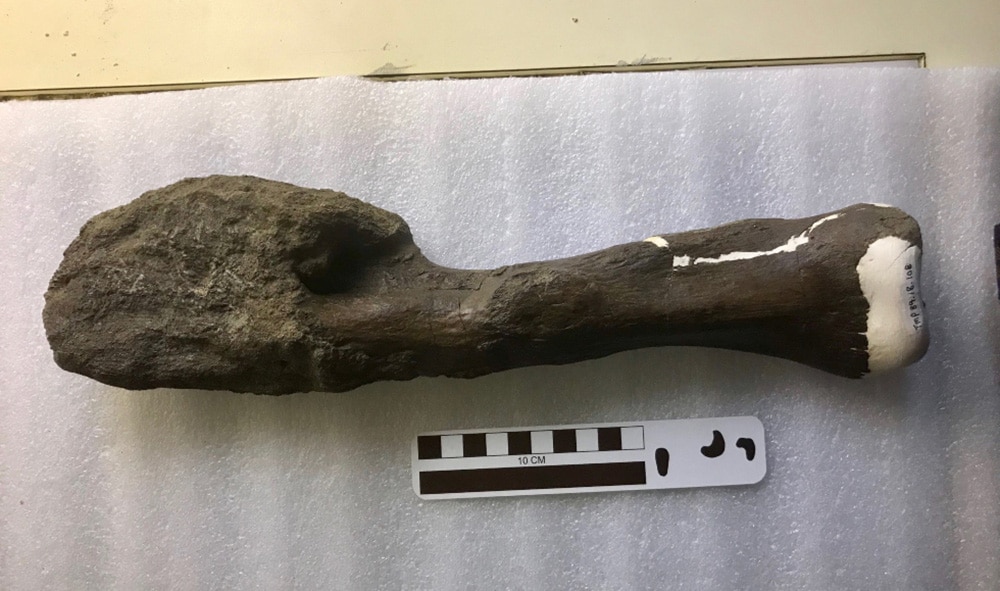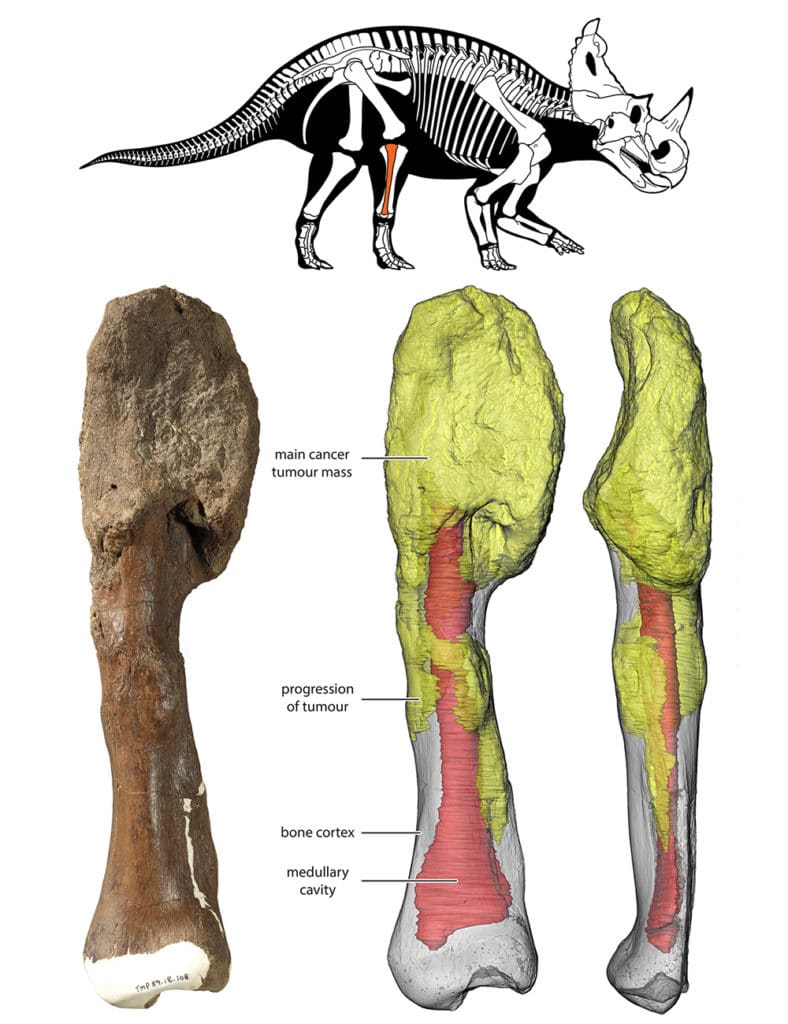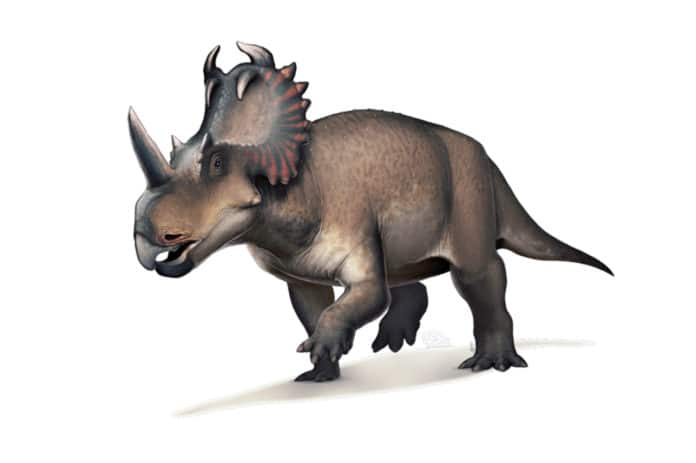Even in prehistoric times, disease cancer was a nuisance, and dinosaurs also had to deal with it.
Researchers at McMaster University and the Royal Ontario Museum (ROM) have reported the discovery and diagnosis of aggressive malignant bone cancer – osteosarcoma – for the first time ever in a dinosaur.
The cancer was discovered in the fibula, or lower leg bone, of Centrosaurus apertus, a horned dinosaur that lived 76 to 77 million years ago. The fossil was originally discovered in Dinosaur Provincial Park in Alberta in 1989. Until now, researchers believed that the badly malformed end of the fossil was the result of the recovery from a fracture, but a more in-depth analysis concluded that the dinosaur had cancer.

The researcher team realized the unusual properties of the bone during a visit to the Royal Tyrrell Museum in 2017 and decided to investigate the case using modern techniques. The team re-evaluated the bone and approached the diagnosis similarly to how they might approach the diagnosis of an unknown tumor in a human patient.
The bone was examined, casts were made, and high-resolution computed tomography (CT) scans were performed. Scientists then thin-sectioned the fossil bone and examined it under a microscope to assess it at the bone-cellular level. Powerful 3D reconstruction tools were used to visualize the progression of cancer through the bone.

Using this rigorous process, scientists were able to arrive at the diagnosis of osteosarcoma. A human fibula with a confirmed case of osteosarcoma and a normal fibula from a dinosaur of the same species were used for comparison and confirmation of the diagnosis.
“The shin bone shows aggressive cancer at an advanced stage. Cancer would have had crippling effects on the individual and made it very vulnerable to the formidable tyrannosaur predators of the time,” says Evans, an expert on these horned dinosaurs. “The fact that this plant-eating dinosaur lived in a large, protective herd may have allowed it to survive longer than it normally would have with such a devastating disease.”
“It is both fascinating and inspiring to see a similar multidisciplinary effort that we use in diagnosing and treating osteosarcoma in our patients, leading to the first diagnosis of osteosarcoma in a dinosaur,” says Seper Ekhtiari, an orthopedic surgery resident at McMaster University.
No malignant cancer (a type of tumor that can spread throughout the body and have severe health implications) has been documented in dinosaurs previously. The establishment of links between human diseases and diseases of the past will help scientists better understand the evolution and genetics of various diseases.
Journal Reference:
- First case of osteosarcoma in a dinosaur: a multimodal diagnosis. DOI: 10.1016/S1470-2045(20)30171-6
